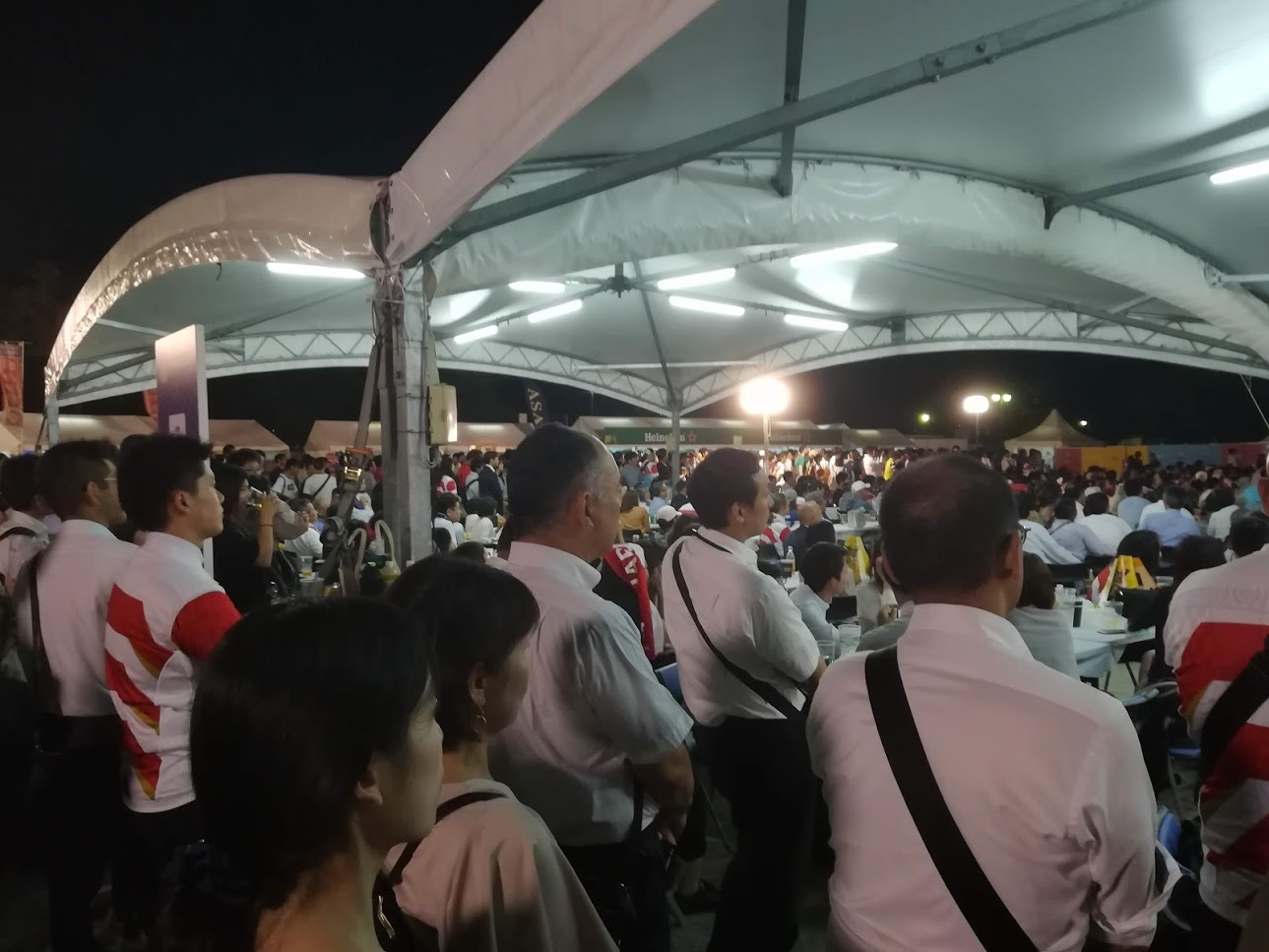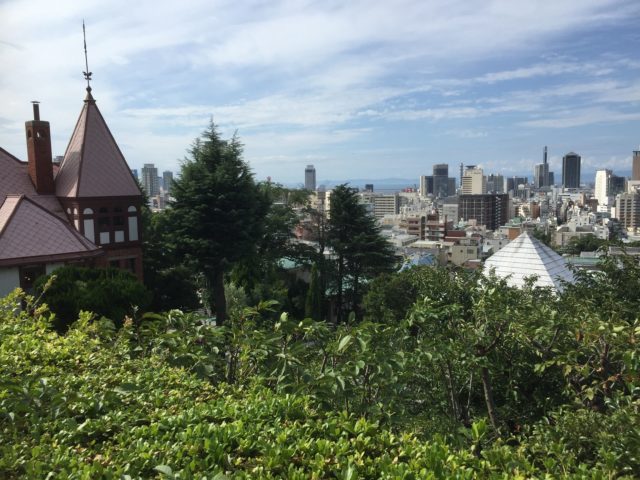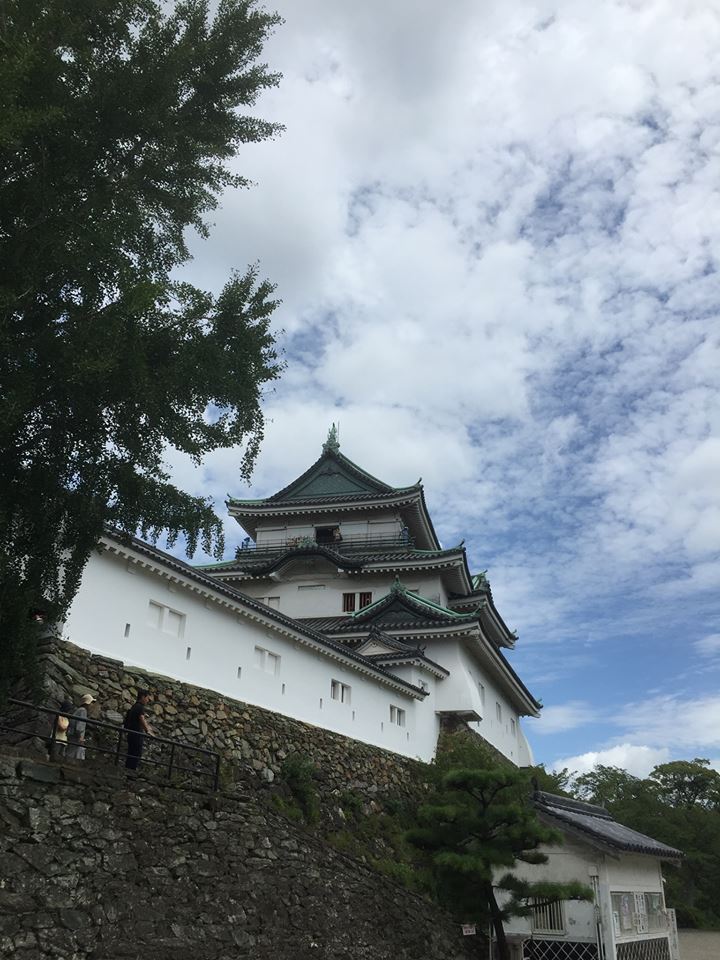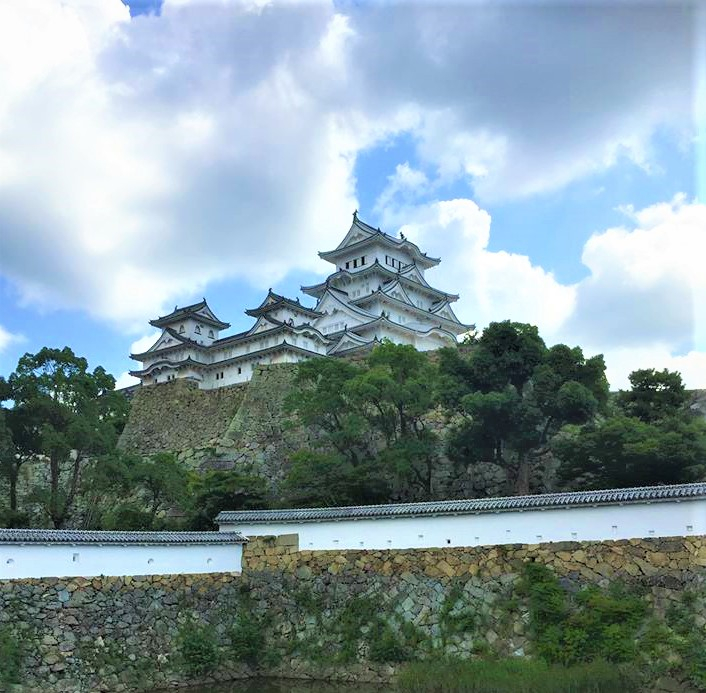BLOSSOMS BLOOM
Despite some early jitters and confusion at their disallowed try, Japan ran out comfortable winners in the the opening match of the tournament, 30-10, picking up a bonus point for making it over the line on four occasions.
The fan zone in Shizuoka had a north and south section and I reckon about 1,000 people turned out; not bad considering it was the first night and the threat of rain was very much in the air.
Happily, entry was free and there was a covered area, although it wasn’t very large. That might need to be rethought if the weather goes south and they want people to attend in numbers. The fans were also pretty into it albeit fairly reserved, which will presumably change later on in the competition as the stakes rise.
‘Themed’ food was on the menu with the theme being World Cup participants. The UK was represented by fish and chips (in the vaguest possible sense), while there was also a pizza section (Italy) and a “samovar” area (Russia) that seemed to be serving liquor (not tea). As is common in Japan, vegetarian options were thin on the ground and vegan non-existent.
Although the Netherlands didn’t make it to the World Cup, the fan zone was restricted beer-wise to Heineken. With so many craft breweries operating in Shizuoka and Japan as a whole, this was a disappointment, but massive sponsors will be massive sponsors. I bit the bullet and got a 500ml beer for 800 yen (6 quid/8 dollars). As it was half foam, I asked for a top-up, which was granted with just the hint of a dirty look.
Bags were cursorily checked before entering the fan zone for drinks/prohibited items, but a fair number of people opted to stay on the benches just outside drinking their own supplies with a perfectly good view of the big screen. That may well be my plan of action tomorrow for England.
In today’s early match, Fiji were on top well into the second half, before Australia switched on the afterburners and ran in four late tries to take the match 39-21 (with bonus point).
I got back home from work just in time for the second half of the second match, the closest of the tournament so far. Argentina mounted a stirring comeback from 20-3 down to 21-20 up, only for a French drop goal to squeeze them back into the lead.
Argentina got their chance to snatch it at the death; the long distance penalty had the legs, but hooked round to the left and wide of the posts, leaving the final score 23-21.
France receive 4 points for the win and Argentina must settle for a consolation bonus point for finishing within seven.
I’m going to switch my full attention to the Springboks All Blacks encounter now. Over and out.
Yesterday’s Match
Japan 30-10 Russia (Tokyo Stadium, Tokyo)
Today’s Matches
Australia 39-21 Fiji (Sapporo Dome, Sapporo)
France 23-21 Argentina (Tokyo Stadium, Tokyo)
New Zealand vs South Africa (1845 JST) (International Stadium, Yokohama)
Expression of the day
泡がちょっと多すぎるんですが (awa ga chotto oosugirun desu ga)
Which means…
The head on my beer is a little excessive.
Previous Day Next Day






